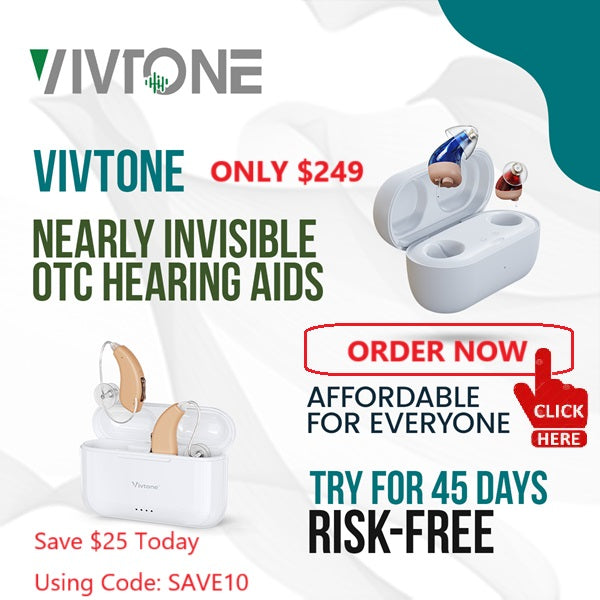Digital Hearing Aids: How Advanced Technology Can Enhance Your Hearing
Navigation
- The Prevalence of Hearing Loss
- Limitations of Analog Hearing Aids
- Key Benefits of Digital Hearing Aids
- The Future of Hearing Aid Technology

Introduction
Hearing loss is becoming a bigger issue affecting people of all ages and backgrounds. Around 48 million Americans say they have some level of hearing difficulties - and that number will likely go up as the population gets older. For many people, having issues hearing can make it harder to chat with others, get work done efficiently, and take part in social events.
While old-school analog hearing aids can amplify sounds, they have some real drawbacks when it comes to sound quality and customization. But with recent tech improvements, digital hearing aids are making huge strides in assisting people to hear better and engage more fully with the world around them.
The Prevalence of Hearing Loss

Age-related hearing decline often begins to manifest in one's 50s and 60s. However, prolonged exposure to loud noise is also a major factor contributing to hearing loss among younger generations. Recent studies indicate that approximately 18% of adults in the United States between ages 20 and 69 have hearing damage from noise exposure. Veterans are also disproportionally impacted by hearing impairment.
No matter the cause, many who experience hearing loss report it takes a significant toll on their quality of life. Difficulty hearing conversation, media, and activities can lead to social isolation, depression, and cognitive decline. As populations continue to age, the prevalence of hearing loss is expected to keep rising over the coming decades.
Limitations of Analog Hearing Aids

While analog hearing aids have been used for decades, they have notable drawbacks. Analog devices simply amplify all incoming sounds together without differentiating desired sounds from background noise. This leads to suboptimal sound quality, especially in crowded environments. Analog hearing aids are also prone to feedback and whistle sounds when amplification is increased.
Additionally, analog models provide limited customization for individual users. One setting must be manually adjusted for all listening scenarios. There is no ability to tailor the sound for different environments or levels of impairment. As a result, many users find limited benefits from legacy analog hearing aids.

Modern digital hearing aids tackle a bunch of the issues with old analog models. Digital hearing aids turn incoming sound waves into numerical codes first, then apply customized digital processing and amping. This allows for clearer audio, cutting background noise, wireless streaming abilities, and apps to change settings from afar.
Advanced Digital Signal Processing
At the heart of digital hearing aids is advanced digital signal processing (DSP) powered by modern computer chips. DSP allows the device to selectively amplify different sound frequencies based on an individual's unique hearing profile. This customized processing reduces distortion for excellent speech intelligibility. DSP also enables features like:
- Noise reduction - Multiple microphones and noise cancellation filter out distracting backgrounds
- Feedback cancellation - Prevents unwanted whistling from amplification
- Directional focusing - Amplify sounds from the front more than the rear
Bluetooth Connectivity and Integration
Another key innovation is Bluetooth connectivity, which allows digital hearing aids to stream audio directly from smartphones, TVs, and other devices. This delivers phone calls, music, media, and more straight into the ears. Bluetooth enables discreet, hands-free listening without any intermediary device needed.
New "hearable" technology also integrates fitness tracking, translating capability, social media alerts, and more into smart hearing aids. As consumer electronics embrace ears-first interaction, hearing aids are following suit.
Mobile App Control and Customization
Mobile apps unlocked new avenues for personalizing digital hearing aids. Users can adjust settings like volume, create customized sound profiles for different environments, geotag locations, find misplaced devices, and more.
Apps also enable remote tuning by audiologists for perfectly tailored sound. Rather than repeated office visits, adjustments can be made in real-time via the app. This allows refinements as users experience new listening environments.
Key Benefits of Digital Hearing Aids
With their advanced digital signal processing, connectivity, and control features, digital hearing aids provide significant benefits over basic analog models:
Enhanced Sound Quality and Clarity
Digital hearing aids deliver awesome sound quality for both chatting and listening to music without any static or distortion. Adjustments are made based on the type of sound and the person's hearing abilities. The end result is crystal-clear audio tailored to what each user can pick up. Noise-cancellation tech further boosts the signal.Digital hearing aids deliver crystal-clear audio, making lively restaurant conversations enjoyable. Users experience rich, clear voices and minimal background noise, enhancing social interactions.
Background Noise Reduction
By analyzing and filtering out extra noise, digital hearing aids allow folks to zone in on the voices and sounds they want to catch. This makes it way easier to chat in noisy restaurants, take in public events, and deal with distractions at work. In busy conventions, digital hearing aids filter distractions, allowing users to focus on speakers. Improved concentration leads to more effective professional development. Less effort is needed to listen.
Customizable Listening Experiences
Between mobile app controls, geotagging capabilities, and tracked usage patterns, digital hearing aids can automatically optimize sound for different real-world settings. Listening levels can even be tweaked for streaming vs in-person conversations. Switching from a bustling street to a serene park, geotagged hearing aids offer a seamless transition. Users enjoy the peaceful sounds of nature without manual adjustments. All of this is done automatically for smooth, effortless performance.
Wireless Streaming Capabilities
With Bluetooth functionality, digital hearing aids enable seamless wireless listening. Users can stream audio from smartphones and electronic devices directly into their earpieces. This delivers music, phone calls, podcasts, and media without any accessories needed. During travel, Bluetooth-enabled hearing aids effortlessly switch between music and calls, ensuring clear, uninterrupted communication and enhancing the travel experience.
Improved Social Interaction and Engagement
By improving speech comprehension in noisy environments and enabling wireless communication, digital hearing aids reduce the social isolation caused by hearing loss. Users can more easily follow conversations and engage with others using modern audio streaming. Feelings of embarrassment or exclusion are reduced. In family gatherings, digital hearing aids facilitate active participation. Reduced isolation and embarrassment result in a stronger sense of connection and happiness during precious moments.
The Future of Hearing Aid Technology
Digital hearing aids have propelled major improvements in sound quality, personalization, and connectivity. And the innovations show no signs of slowing down. Exciting developments on the horizon include:
Rechargeable and Longer-Lasting Batteries
Many hearing aids already provide over 24 hours of use per charge. New battery chemistries and inductive charging cases will continue to extend runtime for less frequent charging. Some models may eliminate disposable batteries completely. Imagine the freedom of an entire day without worrying about your hearing aids running out of power. Extended battery life offers uninterrupted auditory experiences, ensuring you stay connected to the world, from morning till night.
Artificial Intelligence and Machine Learning
AI-guided hearing means the device continually optimizes settings on its own based on user scenarios and personalized feedback. It draws patterns from big data to take automatic customization to the next level. Picture hearing aids that adapt and optimize themselves. AI-driven personalization creates a seamless listening journey, evolving with your preferences and surroundings. It's like having a customized hearing experience in every moment.
Expanding Connectivity and Interoperability
Hearing aids are increasingly integrating not just with phones but also with homes and vehicles for immersive listening experiences. Cloud connectivity enables fluid usage across different smart platforms and locations. Envision effortless transitions between your home, vehicle, and smart devices. Your hearing aids connect you to immersive auditory experiences, whether you're in your car, living room, or anywhere else. Experience a world where hearing aids enhance your connection with your surroundings, wherever you are.
Conclusion
The switch to digital has opened up new opportunities for those dealing with hearing loss to feel truly plugged into the world around them. With advanced processing, noise cutting, and wireless streaming, digital hearing aids can be customized to each person and setting. As technology keeps moving forward, these devices are poised to get even smarter and more intuitive. Though managing hearing loss can still be tough, the future's looking bright for subtle gadgets that boost sound and interaction. Being able to catch conversations, media, and life's special moments has never been easier.
Vivtone Hearing Aids: Excellence in Affordable Digital Hearing Solutions
In the realm of digital hearing aids, Vivtone emerges as a standout choice for those seeking quality without the high expense. Established by an ENT doctor, Vivtone has been at the forefront of affordable hearing solutions, serving over 750,000 customers and providing free online hearing tests for a decade.
Vivtone's FDA-registered devices cut out middleman costs, making quality hearing aids more accessible. With Vivtone, you can easily find the right hearing aid to suit your needs and budget, thanks to their straightforward and transparent pricing. Your chosen device is conveniently delivered right to your doorstep, simplifying the process of acquiring hearing aids.
Vivtone distinguishes itself from other brands with its customer-first approach, offering a 45-day risk-free trial and a 1-year manufacturer's warranty. This commitment to customer satisfaction is backed by exceptional, U.S.-based lifetime support. Praised by users like Patty Reich, who said, "Out of 5 stars, I would give them 6," Vivtone's dedication to service is evident.
Endorsed by reviewers like Dennis Miller, who claims Vivtone's products match or surpass higher-priced aids, Vivtone is a wise choice for anyone facing hearing difficulties. With Vivtone, you get more than just a hearing aid; you gain a dependable partner in your hearing journey.
Explore the compatibility of Vivtone Hearing Aids for your needs through our rapid, straightforward, and cost-free online hearing test. Access your results instantly.
Explore Vivtone hearing aids by clicking here and take advantage of up to $1700 off on our medical-grade, over-the-counter hearing devices.







